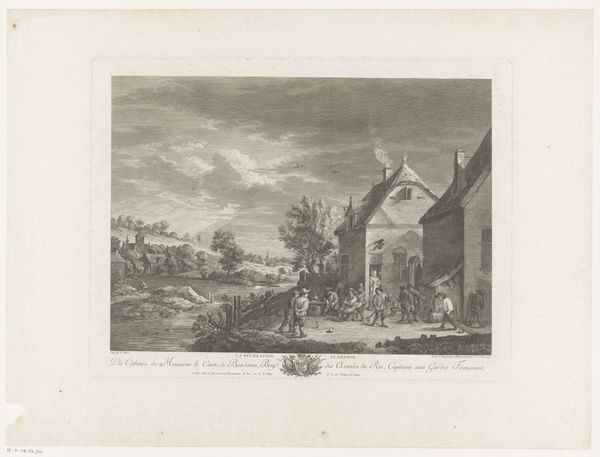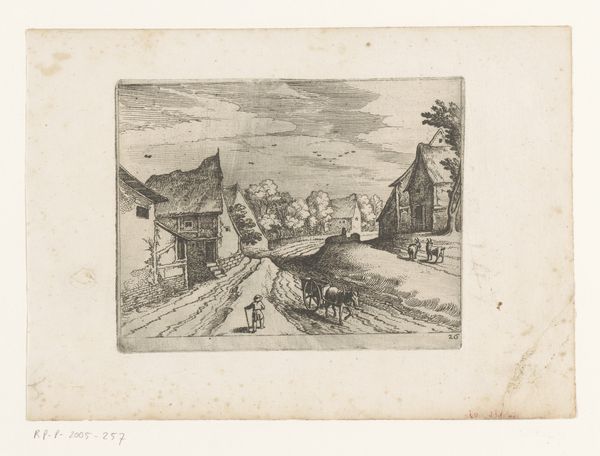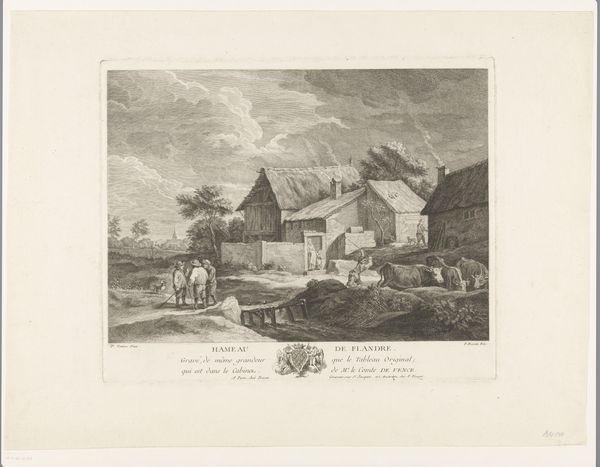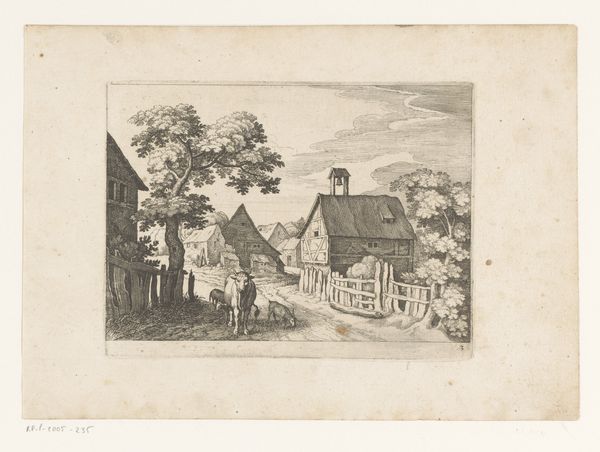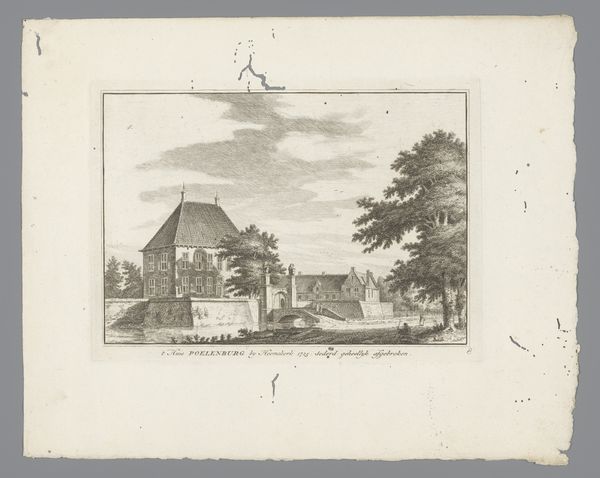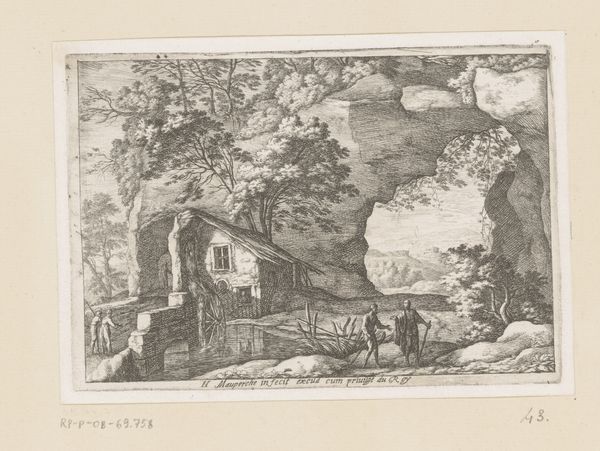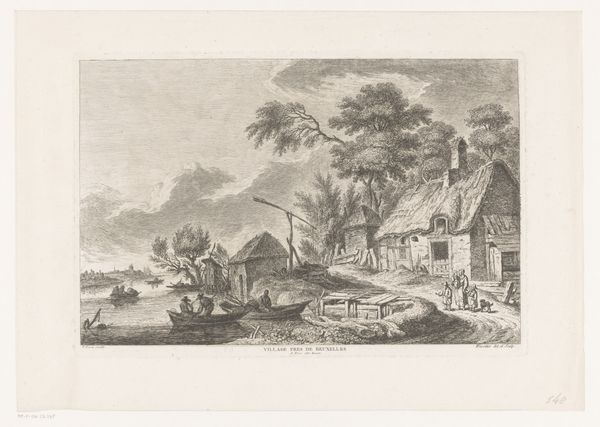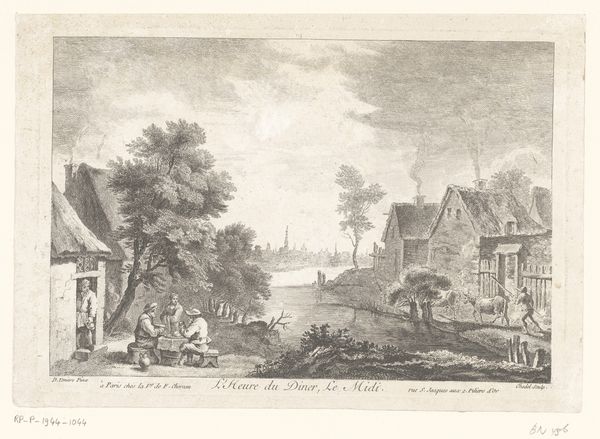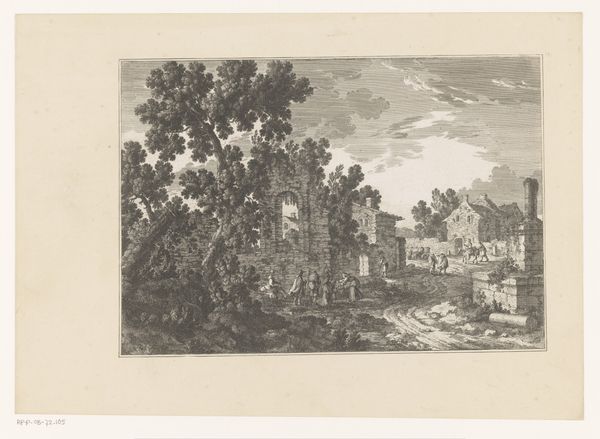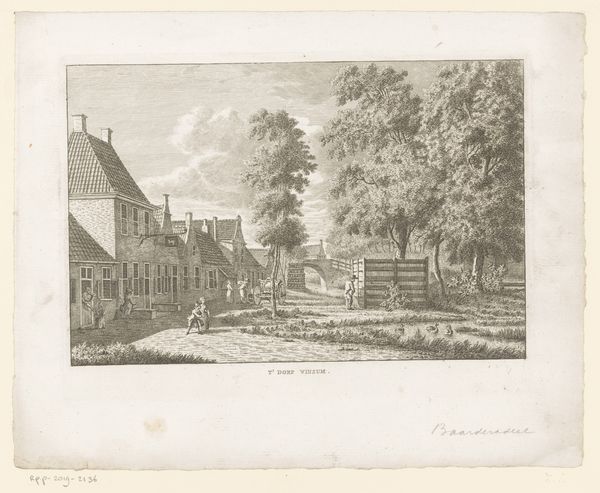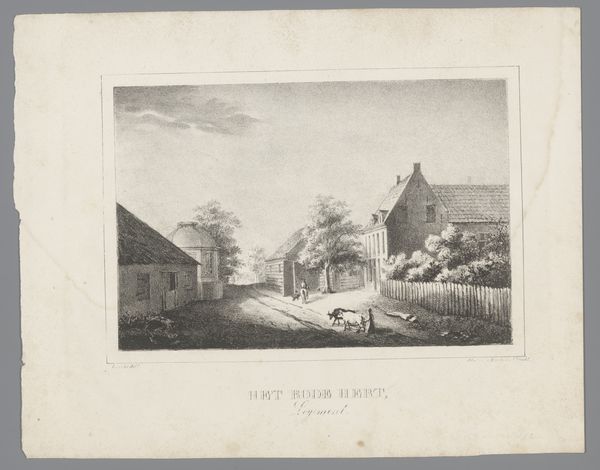
print, etching
#
baroque
# print
#
etching
#
landscape
#
genre-painting
Dimensions: height 195 mm, width 265 mm
Copyright: Rijks Museum: Open Domain
Curator: Welcome. Before us is "Four Men Skittles in a Village," an etching by Johann Georg Hertel, created sometime between 1705 and 1775. Editor: It strikes me as strangely peaceful for a village scene, almost serene, with that bright sky dominating the view. I also notice a beautiful rendition of natural resources, given the presence of many handmade cottages with materials on display. Curator: Exactly. Hertel gives us a window into a specific social and cultural context, portraying leisure activities and possibly social relations within the village. Editor: And look at the cottages' constructions—straw, wood—the basic materials these people rely on daily. Their buildings blend with nature instead of standing out! Do we know where these materials came from? Is there commonality between materials selected among certain villagers? Curator: It’s an insightful point. His selection and emphasis on specific activities is certainly not accidental, implying a social structure and values within this rural community. There are possible gender relations between those that work indoors and the males pictured at leisure in town. Editor: Yes, I see what you mean about leisure; there's something almost idealized about their recreation, which seems tied to resource availability. Curator: It’s crucial to think about what "village" represented historically, not only in social hierarchies and structures, but to question our understanding of an idealized vision of society. The village in history symbolizes resistance to feudalism, in its earliest history. Editor: True. Considering the later production date, perhaps he's looking back at these "resistances," while commenting on industrial transformations within village work. Curator: I appreciate you pointing out the ways materials here become more than just "scenery," to illustrate complex economic issues embedded in community production. Editor: And I, your way of illustrating power relations embedded in play—who has access and who doesn’t is a window into access. The making is the meaning and gives way to its significance. Curator: Very well put. Thinking about this work has really helped me see beyond its surface appeal.
Comments
No comments
Be the first to comment and join the conversation on the ultimate creative platform.
